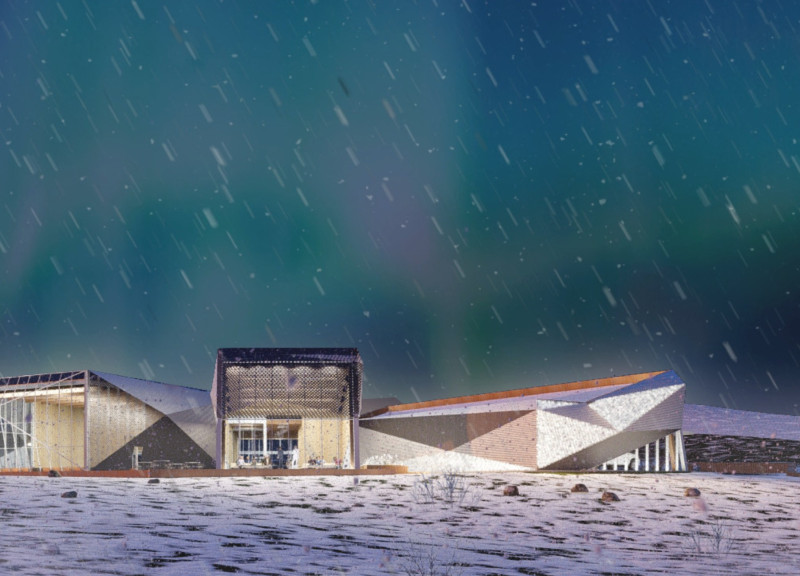5 key facts about this project
The Lake Mývatn Community House is a community center located in the scenic area of North Iceland. It draws inspiration from the traditional longhouse design, which is part of Iceland's cultural history. The building layout aligns with important local landmarks, including Lake Mývatn, Vindbelgjafall mountain, and the dormant Hverfjall volcano. This careful orientation creates connections between the structure and the natural environment, allowing occupants to appreciate the views.
Design Inspiration
The design is based on the historic turf roof longhouses that symbolize Iceland's architectural heritage. By adapting this traditional form, the building achieves a modern look while honoring the past. Each section of the house is rotated to highlight specific views, making the layout dynamic and visually engaging. This approach enhances the relationship between the building and its surroundings.
Spatial Organization
The Community House is organized into three main wings: economy, society, and environment. This arrangement supports a variety of functions, including offices, a depo, washrooms, a kitchen, and community spaces. By thoughtfully arranging these areas, the design promotes efficient use and encourages social interactions. Each part of the building serves the community's needs while fostering a sense of connection among users.
Material Considerations
Sustainability is a key focus in the choice of materials used in the building. Locally sourced and recycled materials feature prominently, which helps reduce environmental impact. The exterior consists of corrugated and perforated metal panels that create a textured and interesting facade. The angular design allows for varied light patterns, enhancing the building's overall appearance while also improving energy efficiency.
Architectural Details
Natural light plays an essential role in the overall design. Large openings in the facade invite sunlight into the spaces, reducing the need for artificial lighting. This emphasis on daylight creates a warm and welcoming atmosphere inside, making the community spaces feel inviting. As light interacts with the textured surface of the building, it reinforces the connection to the striking landscape of Iceland, grounding the architecture in its environment.






















































